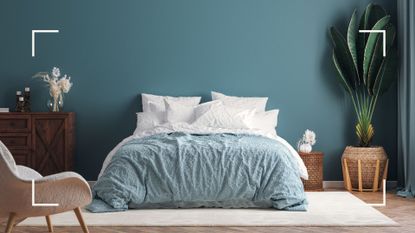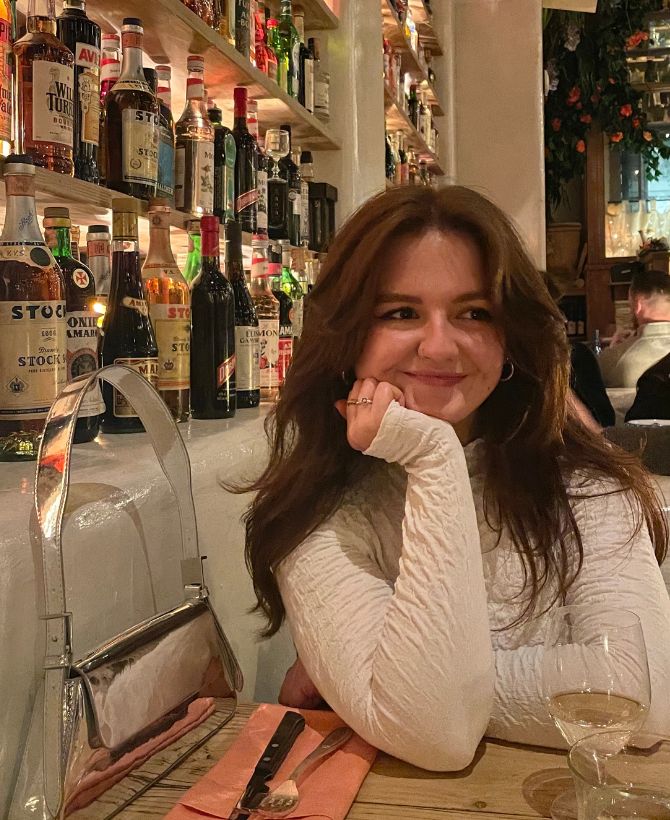The three colours you should ALWAYS avoid using in your bedroom if you want a restful night's sleep
A study revealed the bedroom wall colours that could be seriously disrupting your sleep


Sign up to our free daily email for the latest royal and entertainment news, interesting opinion, expert advice on styling and beauty trends, and no-nonsense guides to the health and wellness questions you want answered.
Thank you for signing up to Woman & Home. You will receive a verification email shortly.
There was a problem. Please refresh the page and try again.
Are you struggling to sleep and just can’t figure out why? A recent study has revealed that it could be the colour scheme of your bedroom that is causing your sleepless nights.
Hotel company Travelodge, recently surveyed over 2,000 UK residents about the colours they've used in their bedrooms and how they affect both their overall mood and sleep quality. From emitting feelings of warmth to inducing nightmares, the findings showed that colours influence us a lot more than we realise.
Allison Hughes, Interior Director at Coastal Road Furniture, explains that some paint colour trends are known to alter our emotions and mindsets due to the rules of colour theory. “When it comes to sleep environment, certain colours stand out for their ability to induce calmness and relaxation” she explains.
So what are the forbidden bedroom colours and why should we be avoiding them? According to the survey, the three colours most likely to have a negative effect on our subconscious wellbeing are purple, dark grey and brown.

Not only does each of these colours disrupt sleep but they also bring forward their own individual negative emotions and feelings. So if you want to keep up with the bedroom trends of 2023 but keep your peace of mind you may want to avoid them.
Using purple in your bedroom, whether on your walls or with the majority of your soft furnishings, can lead to an increase in nightmares. This is because the colour is said to provoke mental stimulation which is the opposite of what we’re aiming for when drifting off to sleep.
Dark grey is said to emit dreariness and depressing energy. However, there is still hope for a grey colour palette. The survey found that light grey or even silver can be incredibly soothing and sleep-inducing when used in the bedroom. And if you’re looking for how to make a bedroom look expensive on a budget, then light grey may be the perfect calming neutral for you.
Brown on the other hand is arguably the least surprising when it comes to unfavourable bedroom colour schemes as it was found to create a feeling of sombreness and sadness. For this reason, it's recommended you use softer shades of brown or keep brown shades in your room to a minimum.

Now we know what colours to avoid, what colours should we be surrounding ourselves with? The simple answer is blue! The colour's positive effect significantly outshone the runners-up, green and yellow.
Hughes says, “In fact, 58% of Britons with a blue wall colour reported waking up feeling happy and refreshed. The colour blue is said to be associated with calming and soothing feelings, which can even help to prevent nightmares.” So if you're looking to create a tranquil, sleep-inducing oasis, blue is the way to go.
If on the other hand, cool and calm isn't what you're going for and you're looking for how to spice things up in the bedroom, then the colour red may be more your speed. It has the opposite effect to blue as it provokes feelings of passion and romance when used in moderation.
woman&home newsletter
Sign up to our free daily email for the latest royal and entertainment news, interesting opinion, expert advice on styling and beauty trends, and no-nonsense guides to the health and wellness questions you want answered.

Emily joined woman&home as a staff writer after finishing her MA in Magazine Journalism from City University in 2023. She specialises in lifestyle writing, both on her personal blog and also for previous work placements such as northern-based magazine Northern Life. Throughout her studies she has developed a love for entertainment reviews, sex and relationship writing and human interest stories.
-
-
 The royal rule Pippa Middleton always follows - even though she doesn't need to
The royal rule Pippa Middleton always follows - even though she doesn't need toThis is the royal rule Pippa Middleton always follows when she is out at a public engagement
By Laura Harman Published
-
 The Tower season 1 recap: What happened in the first season of the gripping ITV drama?
The Tower season 1 recap: What happened in the first season of the gripping ITV drama?Forgotten what happened in The Tower season 1? We've got you covered...
By Robyn Morris Published
-
 How many pillows should you sleep with? We asked three sleep experts - and they all said the same thing
How many pillows should you sleep with? We asked three sleep experts - and they all said the same thingNot sure whether to sleep with one pillow or two? Experts reveal exactly how many pillows you need for a good night's sleep...
By Emily Smith Published
-
 Does Irish Spring Soap repel bugs, mice and spiders? We asked the experts
Does Irish Spring Soap repel bugs, mice and spiders? We asked the expertsIt's often touted as a wonder product when it comes to getting rid of pests, but does Irish Spring Soap actually work? It's complicated...
By Emily Smith Published
-
 Professional chef shares warning about wooden chopping boards
Professional chef shares warning about wooden chopping boardsWooden chopping boards can be ground zero for bacteria. Here's one chef's advice to help you change that...
By Emily Smith Published
-
 How to clean plant leaves - according to gardening experts
How to clean plant leaves - according to gardening expertsJust like everything else in your home, plant leaves can accumulate dust, dirt and grime. Find out how to clean them effectively with our easy guide...
By Emily Smith Published
-
 The chic dining room trend that's best avoided, especially in a family home
The chic dining room trend that's best avoided, especially in a family homeThis popular interior trend is bad Feng Shui, according to experts...
By Emily Smith Published
-
 15 viral cleaning hacks that actually work, as recommended by experts
15 viral cleaning hacks that actually work, as recommended by expertsOur pick of the best cleaning hacks recommended by professionals tried and tested by the woman&home team
By Emily Smith Published







